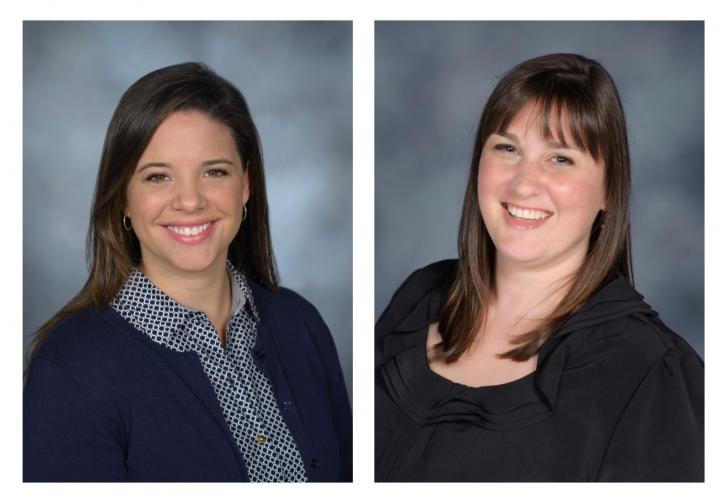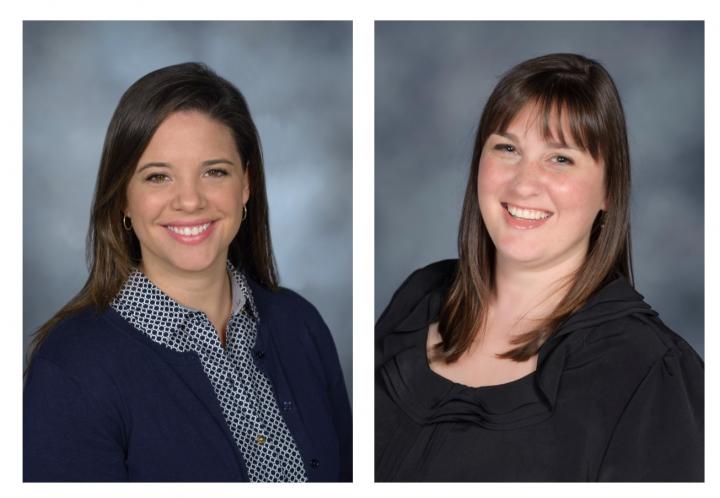
Credit: University of Louisville
As many as 88 percent of human trafficking victims in the United States interact with a health care professional while they are being exploited. These professionals' ability to recognize the signs of human trafficking and intervene appropriately, however, is lacking due to an absence of training.
A new medical school curriculum to fill this training gap has been proposed and tested by researchers from the University of Louisville, Harvard University and the University of South Florida. Their research is published this month in Medical Education Online.
The paper, "Medical education and human trafficking: using simulation," explores the use of a patient simulation training module incorporated into the third year of medical school.
Human trafficking is a public health crisis in the U S, and victims are consistently under-recognized by health care providers (HCPs), the authors write. The National Human Trafficking Resource Center Hotline documented 8,042 cases of reported trafficking in 2016. U.S. studies of trafficking survivors show that anywhere from 25 to 88 percent of these victims interact with an HCP during the time they are being exploited by traffickers.
"One survey shows that 63 percent of HCPs – including physicians, nurses, social workers and physician assistants – did not have training on how to identify and intervene in human trafficking situations," said Olivia F. Mittel, M.D., associate professor of pediatrics at UofL and Norton Children's Hospital who is a co-author of the paper. "Providers must be educated about the issue of trafficking, including how to recognize it in the clinical setting."
To meet this need, the UofL School of Medicine created a simulation-based medical education curriculum to prepare students to recognize victims and intervene on their behalf. Known as the Medical Student Instruction in Global Human Trafficking, or M-SIGHT, the program utilizes online learning, medical documentation and standardized patient-based simulation to prepare students to see the signs of human trafficking.
"We want to ensure that all students receive the training," Carrie A. Bohnert, M.P.A., director of the standardized patient program at UofL, said. "Every medical student, regardless of their chosen specialty, must be able see human trafficking when it presents and intervene for the victim."
M-SIGHT begins with a forensic medicine lecture to impart basic facts about human trafficking, among other topics, Mittel said. Later, students have a standardized patient simulation case in which an adolescent female patient presents with classic symptoms of a sexually transmitted disease as well as common characteristics of victims of human trafficking: poor eye contact, reluctance to communicate with the physician, inconsistencies in what she communicates, tattoos that could suggest branding and evidence of physical abuse.
The goal of the simulation is not to force intervention on the patient but rather to build trust. "We want the students to exercise the principles of adolescent communication that are taught as part of the medical school curriculum," Bohnert said.
Mittel outlined these principles: "They are trauma-informed care – which is health care delivered with an understanding of what patients experiencing trauma need – and ensuring confidentiality, asking non-judgmental and open-ended questions, and gradually progressing from the less invasive questions to more direct questions."
The simulation concludes with feedback from the standardized patient participant and documentation by the learner. The students then complete an online module developed by the authors that assesses knowledge gained and re-introduces definitions of human trafficking and trauma-informed communication techniques.
The initial project was implemented over a 16-month period and the authors are now evaluating the data collected from the students. They intend to share an analysis of the curriculum's efficacy in the future. For now, they want to encourage other medical schools to implement anti-trafficking education and training.
"There is a wide array of methods for creating human trafficking simulations, and it is our hope that the description of our process will inspire others to create similar interactive educational programs," Mittel said. "The ultimate goal, of course, is to help human trafficking victims receive both the health care they need and interventions that stop their exploitation."
###
Along with Mittel and Bohnert, the other authors on the paper were Hanni Stoklosa, M.D., of Harvard University and Brigham and Women's Hospital, and Michelle Lyman, a student at the University of South Florida's Morsani College of Medicine.
Media Contact
Jill Scoggins
[email protected]
502-852-7461
http://www.louisville.edu
Original Source
http://uoflnews.com/releases/uofl-harvard-and-usf-provide-model-for-medical-schools-to-teach-the-signs-of-human-trafficking/ http://dx.doi.org/10.1080/10872981.2017.1412746





